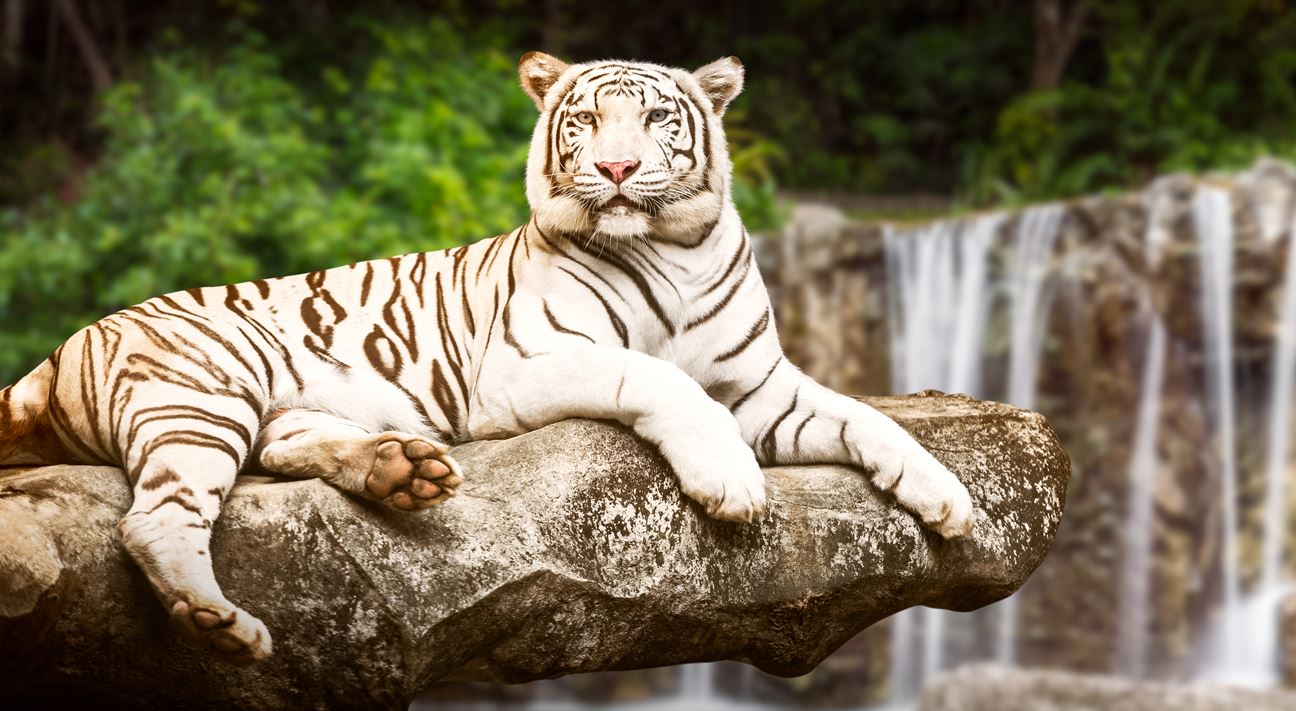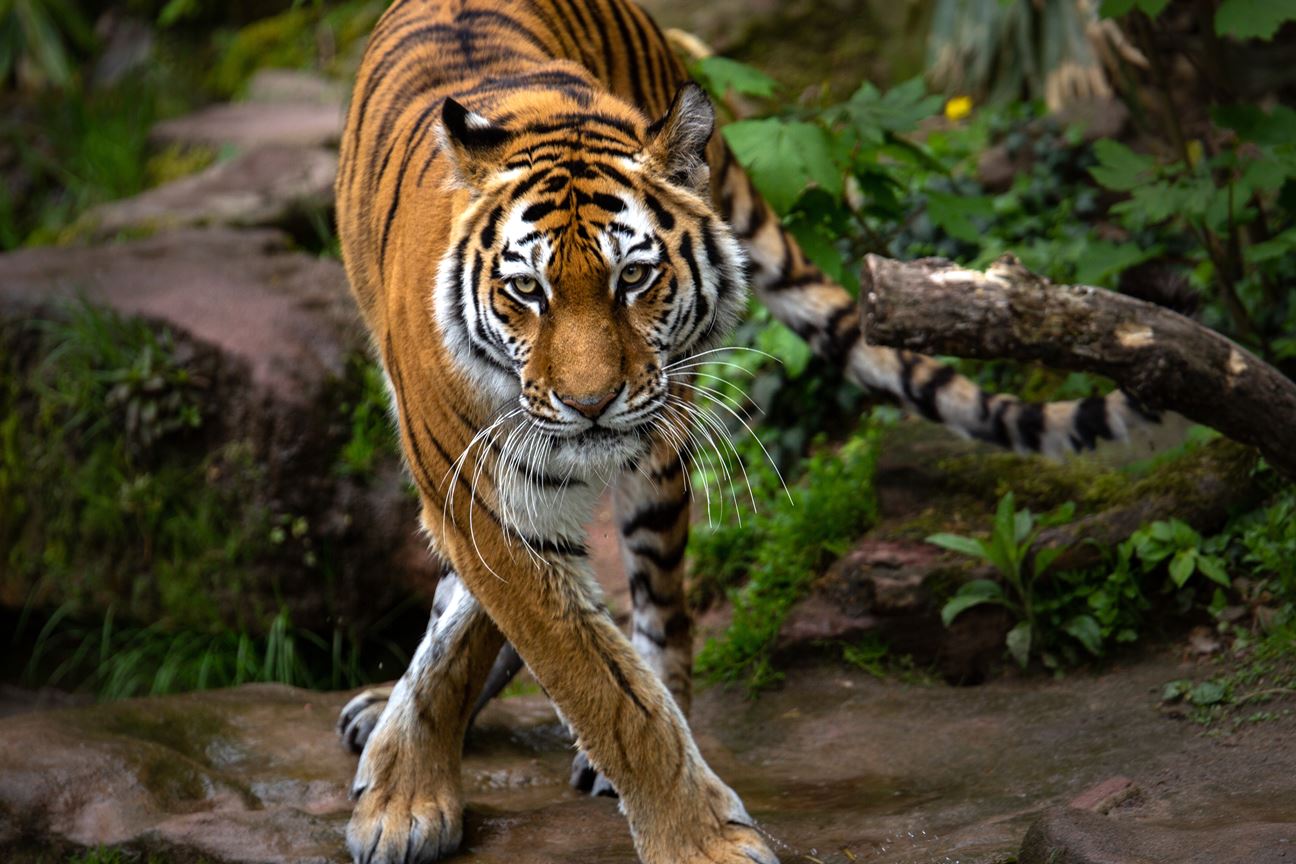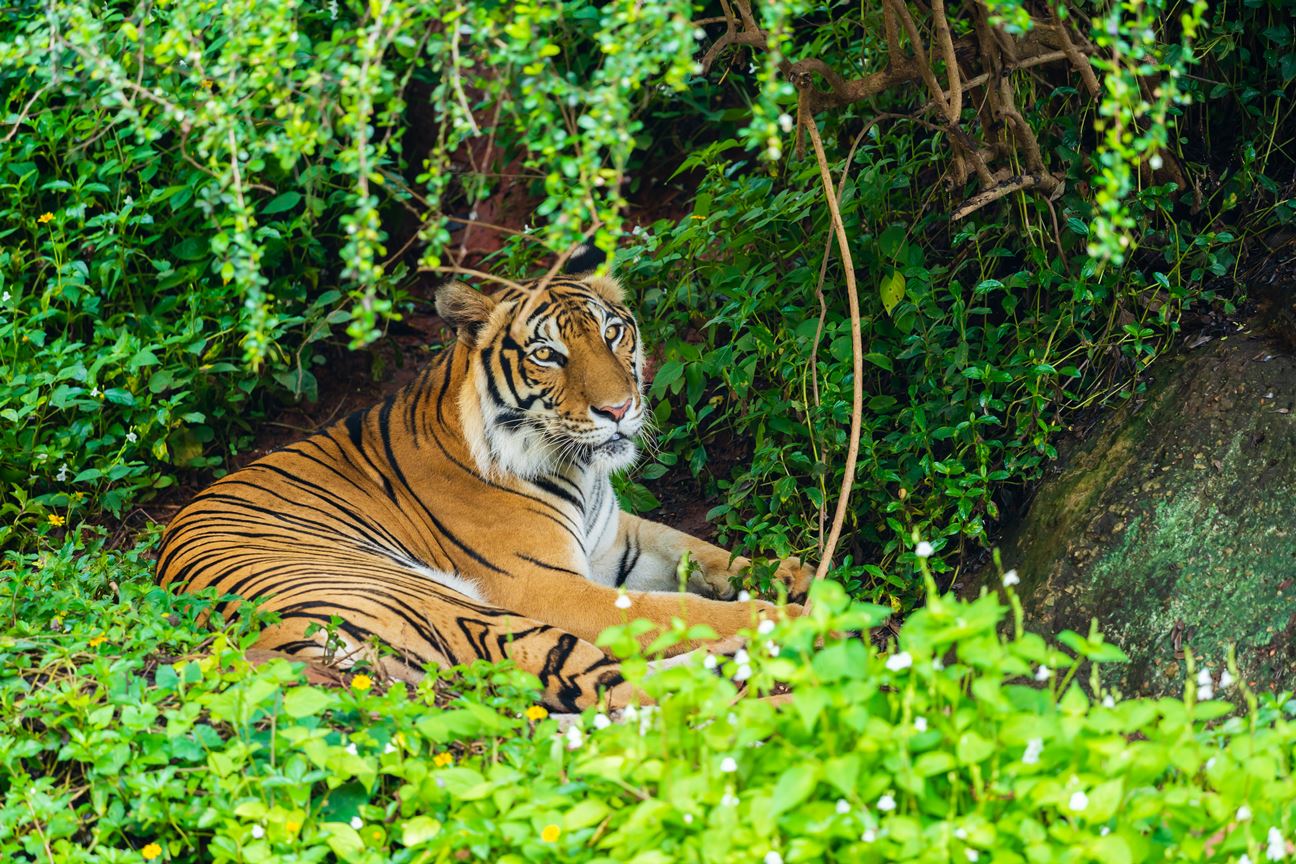How long have tigers been around? What role do they play in our culture? Why should we protect them? Get to know your favourite large cats better this International Tiger Day!
On July 29th each year, we celebrate International Tiger Day, a global observance dedicated to raising awareness about the plight of these magnificent yet endangered creatures.
The largest wild cats on Earth, tigers have long held a special place in the world and human culture. Today, let’s explore their significance and evolution through history so we understand just how important it is to conserve them!

The Early Beginnings
Tigers, scientifically known as Panthera tigris, have an intriguing evolutionary journey that spans millions of years! Their roots can be traced back to the saber-toothed cats, who roamed the Earth over two million years ago. These ancient felines were equipped with elongated canine teeth designed for hunting large herbivores. The apex predators of their time, they ruled the jungle with an iron paw!
These ancient felines went extinct about 10,000 years ago, but their legacy lives on in the modern big cats. Tigers, lions, leopards, and jaguars are all their descendants and have inherited their fierce hunting instincts.

Tigers Around the World
Throughout history, tigers have enjoyed a vast distribution of their populations across various regions in Asia. From the dense forests of Siberia to the lush rainforests of Indonesia, they have exhibited remarkable adaptability, thriving in diverse habitats such as snowy landscapes and mangrove swamps.

Different subspecies of tigers have developed unique characteristics based on the environments they inhabited:
- Bengal tigers are found in the dense forests of India, Bangladesh, and Nepal. Their stripes are typically darker and more pronounced than other subspecies to help them to blend in with the shadows of the forest. India has the biggest population of Bengal tigers, with just over 3,000 of them.
- Sumatran tigers are the smallest subspecies of tigers, native to the tropical rainforests of Sumatra, Indonesia. Their fur is a lighter orange colour, and their stripes are thinner and more closely spaced than other subspecies. This helps them blend in with the dappled sunlight of the rainforest.
- Malayan tigers are found in the forests of Malaysia and Thailand. They are similar in size to Bengal tigers, but their stripes are more vertical than horizontal, helping them camouflage in the tall grasses and bamboo of the forest.
- Siberian tigers are the largest subspecies, and they call the cold forests of Siberia, Russia their home. With thicker fur, broader chests, and larger skulls, these predators have evolved with the capabilities to pursue larger prey like bears.
- Indochinese tigers are found in the forests of Southeast Asia. They are similar in size to Bengal tigers, but their stripes are more irregular and less pronounced — just like the varied vegetation of their forests! The Indochinese tiger is also more agile than others, and can climb trees!
- South China tigers, from the mountains of South China, are the most endangered subspecies of tigers today and are believed to be functionally extinct. Their evolutionary attributes include — light orange fur, more vertical stripes, a smaller skull, and shorter legs.
The Cultural Legacy of Tigers
Beyond their impressive presence in the wild, tigers have woven themselves deeply into the fabric of human culture and mythology. These creatures hold symbolic importance in numerous cultures — especially in Asian societies!

China, perhaps, has the most myths, traditions, and legends surrounding this animal. In Chinese mythology, the tiger is a protector of good against evil spirits and is often linked to the god of wealth, signifying prosperity and good fortune. The tiger is also a motif for the Earth and matter. Paintings of tigers are often put up in temples and houses for these reasons.
The culture and traditions of India also consider the tiger as a symbol of great strength. The cat is tied to the Gods, Shiva, Durga, and Ayappan as depicted by Hindu mythology. The Warli tribe people are also devout worshippers of the tiger lord, Warghia. The tiger’s cultural impact in India possibly began 5,000 years ago during the Indus Valley civilization itself! Artefacts excavated from Mohenjo-Daro and Harappa show us amulets with symbols of these cats engraved on them.
Korean legends depict the tiger as a noble creature, the king of the animals, embodying loyalty and courage.
In Japanese folklore, the tiger stands as a fierce protector of the natural world, symbolising strength and endurance.
A Word On Tiger Conservation
Unfortunately, the historical range of tigers was much larger than their current range. These majestic creatures, who once roamed the widespread regions of Asia, from Turkey to Russia and from India to China, have shrunk by more than 90% in number over the past century. In fact, some subspecies — the Caspian tiger from Central Asia and the Javan and Bali tigers from Indonesia — have tragically disappeared from their historical habitats completely… leaving only six subspecies of tigers struggling to survive today.

Undoubtedly, tiger conservation assumes paramount importance in these prevailing conditions, but this isn’t the only reason to embrace the cause. Tiger conservation also is also helpful for:
1. Biodiversity Preservation
As apex predators, tigers play a pivotal role in maintaining ecosystem balance by regulating herbivore populations, thus preserving ecological diversity.
2. Ecotourism and Local Economies
Conservation efforts for tigers foster ecotourism, generating revenue for local communities while promoting awareness about wildlife preservation.
3. Conservation of Endangered Species
By safeguarding tiger habitats, we protect numerous other endangered species that share these vital ecosystems.
4. Carbon Sequestration
Tiger-inhabited forests contribute significantly to carbon sequestration, mitigating climate change by storing substantial amounts of carbon dioxide. Fforests also provide up to 50 per cent of the Oxygen we need to survive. By safeguarding the habitats of tigers, we also save ourselves.

On this International Tiger Day, let us celebrate our tigers by revelling in their majestic allure and acknowledging their long legacy. These magnificent generations have been the object of our awe and wonder for generations. Today, however, they are increasingly threatened by habitat loss, deforestation, and poaching across the world and are one of the most endangered animals. In these trying times, it is up to us to protect their dwindling numbers.
Let’s make an active and united effort to #SavetheTigers today!